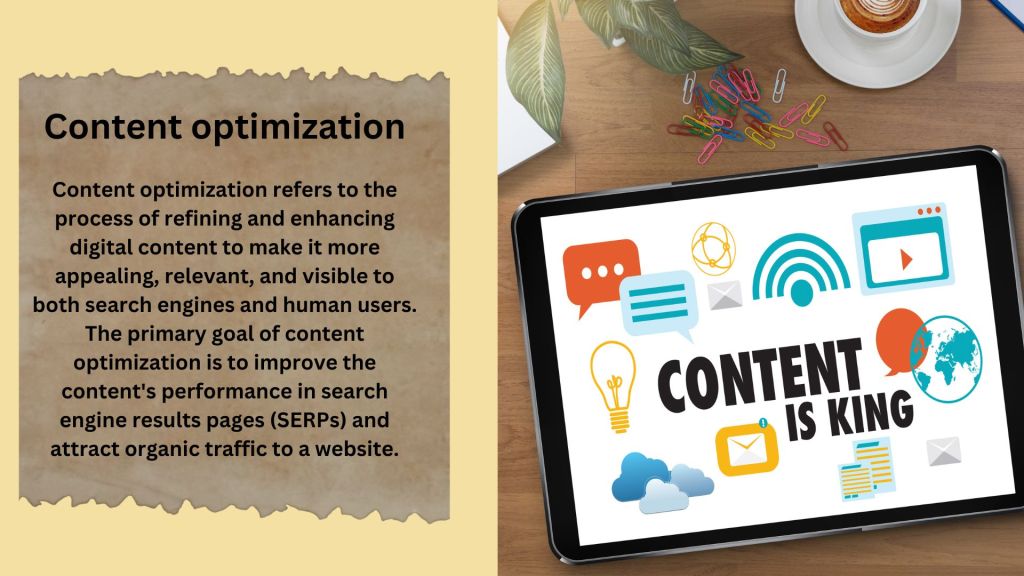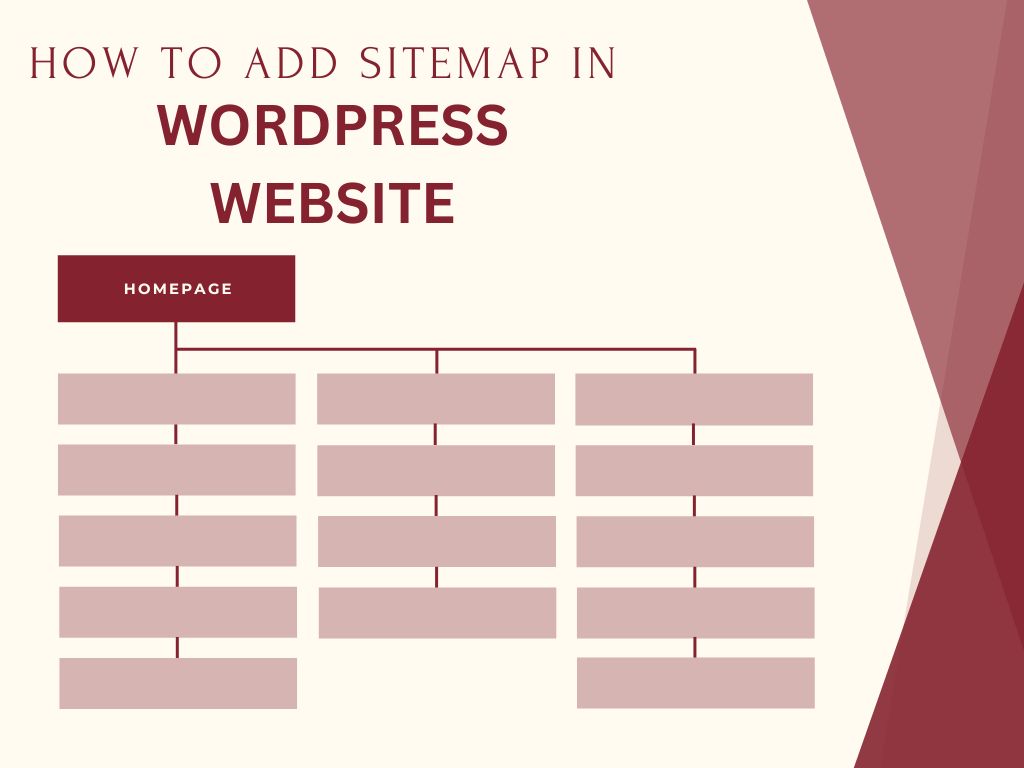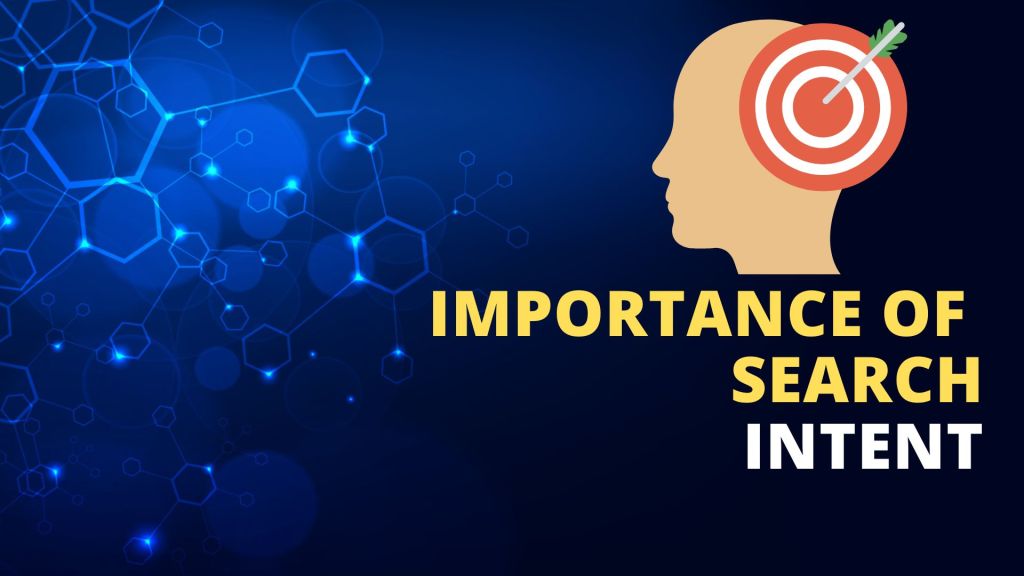Mastering SEO: A Comprehensive Guide to Content Optimization

In the ever-evolving landscape of digital marketing, Search Engine Optimization (SEO) remains a cornerstone for driving organic traffic to websites. Among the myriad of SEO strategies, content optimization stands out as a pivotal aspect. Crafting content that not only resonates with your audience but also ranks well on search engine results pages (SERPs) is essential for success in the online realm. In this comprehensive guide, we’ll delve deep into the intricacies of content optimization for SEO, providing you with actionable insights to enhance your online presence and drive sustainable growth.
Understanding Content Optimization
Before delving into the nitty-gritty of content optimization, it’s imperative to grasp its underlying principles. Content optimization, in essence, revolves around tailoring your digital content to rank higher on search engines for specific keywords or phrases relevant to your niche. It involves a strategic approach to make your content more appealing to both search engine algorithms and human readers.
What is content optimization ?
Content optimization refers to the process of refining and enhancing digital content to make it more appealing, relevant, and visible to both search engines and human users. The primary goal of content optimization is to improve the content’s performance in search engine results pages (SERPs) and attract organic traffic to a website.
Why is Content Optimization Important?
Content optimization is crucial in SEO for several reasons:
- Improved Visibility: Optimized content is more likely to rank higher in search engine results pages (SERPs) for relevant keywords and phrases. By aligning content with user search queries, businesses increase their chances of being discovered by potential customers.
- Increased Organic Traffic: Higher search engine rankings result in increased organic traffic to a website. Users tend to click on the top results displayed by search engines, making it essential for businesses to optimize their content to appear prominently in SERPs.
- Enhanced User Experience: Optimized content is not only tailored for search engines but also for human readers. By providing valuable information, answering users’ questions, and addressing their needs, businesses can improve the overall user experience, leading to higher engagement and lower bounce rates.
- Better Conversion Rates: Relevant and engaging content has the potential to drive conversions by educating, informing, and persuading users to take desired actions, such as making a purchase, signing up for a newsletter, or requesting more information.
- Credibility and Authority: Well-optimized content that consistently provides value to users can help establish a business as a credible and authoritative source within its industry. This, in turn, fosters trust and loyalty among customers and prospects.
- Competitive Advantage: In today’s crowded digital landscape, businesses that invest in content optimization gain a competitive edge over those that neglect it. By staying ahead of the curve and adapting to changes in search engine algorithms and user preferences, businesses can outperform their competitors and dominate their niche.
- Long-Term Sustainability: Content optimization is not a one-time task but an ongoing process. By continuously refining and updating content based on performance metrics and industry trends, businesses can maintain their search engine rankings and sustainably grow their online presence over time.

HOW TO OPTIMIZE CONTENT ?
Optimizing content for SEO involves several key steps to ensure that it’s not only visible to search engines but also valuable and relevant to your target audience. Here’s a comprehensive guide on how to optimize content effectively:
- Keyword Research:
- Start by conducting thorough keyword research to identify relevant terms and phrases that your target audience is searching for.
- Use keyword research tools like Google Keyword Planner, SEMrush, or Ahrefs to discover search volume, competition, and related keywords.
- Focus on long-tail keywords, which are more specific and have less competition, but often result in higher conversion rates.
- Consider user intent when selecting keywords to ensure that your content addresses the needs and interests of your audience.
- Content Planning:
- Develop a content strategy that aligns with your business goals and target audience preferences.
- Create a content calendar to organize and plan your content creation efforts, ensuring consistency and relevance.
- Identify topics and themes based on keyword research and audience insights, aiming to provide valuable information and solutions to common questions or pain points.
- On-Page Optimization:
- Incorporate target keywords naturally throughout your content, including in the title, headings, meta description, and body text.
- Ensure that your content is well-structured with clear headings, subheadings, and bullet points to improve readability and user experience.
- Optimize meta tags, including title tags and meta descriptions, to entice users to click through to your content from search engine results pages (SERPs).
- Use descriptive and keyword-rich URLs for your web pages, blog posts, and other content assets.
- Content Creation:
- Write high-quality, engaging content that provides value to your audience and satisfies their search intent.
- Aim for originality and uniqueness in your content, avoiding plagiarism or duplicating content from other sources.
- Incorporate multimedia elements such as images, videos, infographics, and charts to enhance the visual appeal and comprehensiveness of your content.
- Include relevant internal links to other pages on your website to improve navigation and user engagement.
- Optimizing for User Experience:
- Ensure that your content is mobile-friendly and responsive to accommodate users accessing your website from various devices.
- Improve page load speed by optimizing images, minimizing code, and leveraging browser caching to enhance user experience and reduce bounce rates.
- Use descriptive alt text for images to improve accessibility and provide context for search engines.
- Format your content for easy scanning and skimming by using short paragraphs, bullet points, and bold text to highlight key points.
- Promotion and Distribution:
- Share your optimized content across relevant social media channels to increase visibility and engagement.
- Reach out to influencers, industry experts, and other websites to promote your content and earn backlinks.
- Participate in online communities and forums related to your niche to share your expertise and drive traffic to your content.
- Monitor and respond to comments, feedback, and questions from your audience to foster engagement and build relationships.
- Measurement and Iteration:
- Use analytics tools like Google Analytics and Google Search Console to track the performance of your optimized content.
- Monitor key metrics such as organic traffic, keyword rankings, click-through rates, and conversion rates to assess the effectiveness of your optimization efforts.
- Identify areas for improvement based on data insights and user feedback, and make iterative adjustments to your content and SEO strategy accordingly.
By following these steps and best practices, you can effectively optimize your content for SEO, improve visibility in search engine results, and attract more organic traffic to your website. Remember that content optimization is an ongoing process that requires continual monitoring, analysis, and refinement to stay ahead of the competition and drive sustainable growth.
TOOLS TO OPTIMIZE CONTENT IN SEO
There are numerous tools available to help optimize content for SEO, ranging from keyword research and content planning to on-page optimization and performance tracking. Here’s a curated list of some of the most popular and effective tools for optimizing content in SEO:
- Google Keyword Planner: This free tool by Google allows you to discover new keywords, analyze search volume trends, and estimate traffic potential for specific keywords. It’s an essential tool for conducting keyword research and identifying relevant terms to target in your content.
- SEMrush: SEMrush is a comprehensive SEO tool that offers a wide range of features, including keyword research, competitive analysis, backlink analysis, site auditing, and more. It provides valuable insights into your website’s SEO performance and helps identify opportunities for optimization.
- Ahrefs: Ahrefs is another powerful SEO tool that offers robust features for keyword research, content analysis, backlink analysis, rank tracking, and site auditing. It provides detailed data on keywords, competition, and search trends, helping you make informed decisions about your content strategy.
- Moz Pro: Moz Pro offers a suite of SEO tools, including keyword research, rank tracking, site auditing, and link analysis. It provides actionable insights and recommendations to improve your website’s visibility and performance in search engine results.
- Yoast SEO: Yoast SEO is a popular WordPress plugin that helps optimize content for on-page SEO. It provides real-time feedback and suggestions for improving content readability, keyword usage, meta tags, and other on-page elements to enhance search engine visibility.
- Grammarly: Grammarly is a writing assistant tool that helps improve the quality and readability of your content by identifying grammatical errors, spelling mistakes, and writing style issues. It ensures that your content is well-written and professional, which can positively impact SEO performance.
- BuzzSumo: BuzzSumo is a content research tool that helps identify trending topics, popular content formats, and influential publishers in your niche. It provides valuable insights into content performance and helps inform your content strategy and optimization efforts.
- Screaming Frog: Screaming Frog is a website crawling tool that allows you to audit your website for technical SEO issues, such as broken links, duplicate content, and missing meta tags. It provides detailed reports and recommendations for optimizing your website’s structure and performance.
- Google Search Console: Google Search Console is a free tool provided by Google that allows you to monitor and optimize your website’s presence in Google search results. It provides valuable data on search performance, indexing status, and mobile usability, helping you identify and fix issues that may affect your SEO.
- ContentCal: ContentCal is a content planning and collaboration tool that helps streamline the content creation process. It allows you to plan, schedule, and publish content across multiple channels, track performance metrics, and collaborate with team members, making it easier to execute your content optimization strategy effectively.
These are just a few examples of the many tools available to optimize content for SEO. Depending on your specific needs and budget, you may choose to use one or more of these tools in combination to maximize the effectiveness of your content optimization efforts.
In the digital landscape, where visibility is paramount and competition is fierce, content optimization emerges as a cornerstone of effective SEO strategies. Through meticulous keyword research, strategic planning, and thoughtful execution, businesses can enhance their online presence, attract organic traffic, and achieve their desired objectives.
Content optimization is not merely about appeasing search engine algorithms; it’s about delivering value to users. By crafting high-quality, engaging content that addresses the needs and interests of their audience, businesses can establish credibility, foster trust, and build lasting relationships in the digital realm.
With an array of tools and techniques at their disposal, marketers and website owners have the means to optimize content effectively and drive sustainable growth. From keyword optimization and on-page enhancements to user experience improvements and performance tracking, each aspect of content optimization plays a crucial role in achieving success in SEO.
As algorithms evolve and user behaviors shift, the journey of content optimization continues. It’s an ongoing process of monitoring, analyzing, and iterating to stay ahead of the curve and remain relevant in an ever-changing landscape. By embracing the principles of content optimization and staying attuned to the needs of their audience, businesses can position themselves for long-term success in the dynamic world of SEO.




Leave a comment